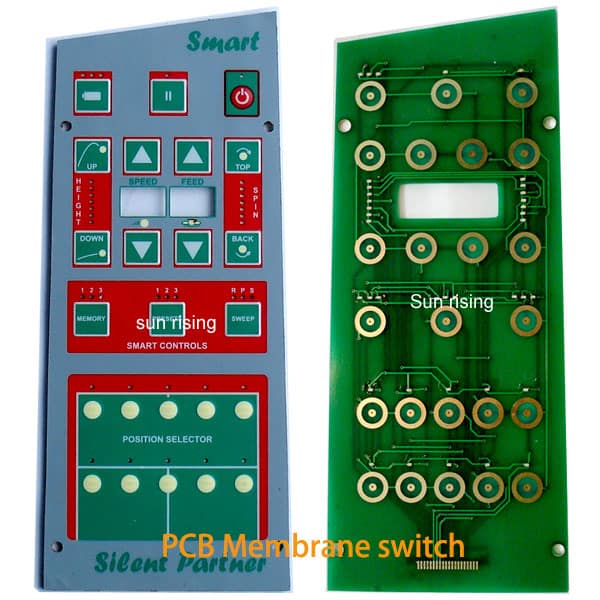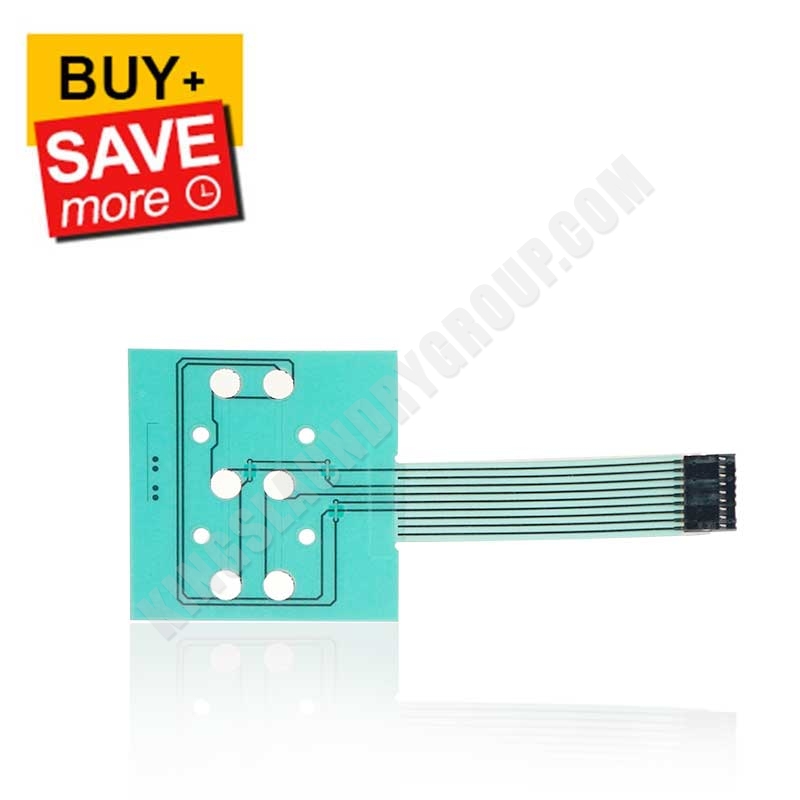Membrane Layer Switch Modern Technology: The Key to Trusted and Cost-Effective User Interfaces
Membrane layer switch innovation has actually arised as a pivotal component in the layout of interface, providing both dependability and cost-effectiveness throughout a diverse variety of applications. Its robust building and construction guarantees resistance to ecological obstacles, while the flexibility in style enables tailored services that meet specific sector demands. As we discover the multifaceted benefits of membrane layer buttons, their potential for development questions regarding future applications and progressing fads. What does the next chapter hold for this modern technology in a significantly electronic landscape?
Recognizing Membrane Change Innovation
Membrane switch modern technology is an extensively made use of user interface service in numerous digital tools, using a seamless blend of functionality and layout. This technology incorporates multiple layers of materials, usually including a graphic overlay, spacer layer, and a circuit layer. The graphic overlay displays the interface aspects, while the spacer layer separates the circuit layer from the overlay till an individual triggers a switch.
When stress is related to the overlay, the circuit layer completes the electrical circuit, sending out a signal to the gadget. This mechanism permits for numerous setups, including tactile feedback and backlighting alternatives, boosting individual interaction. Membrane layer buttons are commonly made utilizing resilient products such as polyester or polycarbonate, making sure longevity and resistance to ecological elements like wetness and dirt.
The adaptability of membrane layer switches over allows their application in varied markets, consisting of clinical devices, customer electronics, and industrial controls. Their portable layout enables assimilation into space-constrained environments, supplying a reliable interface without compromising visual appeal. Understanding the complexities of membrane layer switch innovation is important for suppliers and developers seeking to create dependable and effective human-machine user interfaces.
Trick Benefits of Membrane Switches
While different user interface options exist, membrane layer changes deal distinct advantages that make them a favored choice in numerous applications. Among the main benefits is their resilience; membrane buttons are created to endure harsh ecological conditions, consisting of wetness, dust, and temperature level changes, guaranteeing long-lasting efficiency. This durability significantly lowers the requirement for frequent substitutes, thus decreasing general upkeep expenses.

In addition, membrane buttons are light-weight and portable, making them suitable for applications where space is limited. Their low-profile style adds to a streamlined look without compromising functionality.
Cost-effectiveness is likewise a significant benefit, as the manufacturing process for membrane layer switches over tends to be less costly contrasted to traditional mechanical switches. This price, integrated with their dependability and ease of installation, positions membrane switches as a functional service for a wide variety of markets seeking reliable and efficient user interfaces.
Applications Throughout Different Industries
How do membrane buttons adjust to the diverse requirements of numerous industries? Membrane layer button technology is progressively identified for its versatility, making it appropriate for a large array of applications across numerous sectors.
In consumer electronics, membrane buttons supply a compact option for remote controls and home appliances, enhancing customer experience through user-friendly layout. Additionally, the commercial sector leverages membrane buttons for equipment control panels, gaining from their resistance to harsh atmospheres, such as dampness and dust.
Armed forces and aerospace applications additionally make use of membrane buttons for their integrity and ability to stand up to severe problems, guaranteeing functional performance in essential circumstances. Additionally, the food and beverage industry takes on these switches for automated systems, where hygiene and convenience of procedure are paramount. Eventually, membrane buttons are customized to satisfy the special Go Here needs of each market, showing their important role in modern innovation user interfaces
Style and Modification Choices

In the realm of membrane layer switch technology, layout and customization alternatives play a critical role in boosting performance and user interaction. These buttons can be customized to satisfy particular functional demands and aesthetic choices, making them versatile parts in numerous applications.
One of the key personalization options is the design of the switch itself, which can be developed to suit unique interface and ergonomic considerations. By readjusting the shape, dimension, and arrangement of buttons, suppliers can create user-friendly designs that promote convenience of use. Additionally, the unification of different shades and visuals overlays enables branding and boosted visibility, making sure that users can promptly identify features.
Moreover, membrane buttons can be crafted with various tactile responses mechanisms, such as increased buttons or distinct clicks, to enhance the individual experience. Different materials can additionally be chosen for durability and ecological resistance, addressing aspects such as wetness, temperature level fluctuations, and chemical direct exposure.
Ultimately, the substantial design and personalization alternatives available in membrane layer button technology equip organizations to create customized solutions that not only satisfy functional requirements yet likewise align with their branding and operational needs.

Future Fads in Membrane Layer Buttons
As membrane layer button technology remains to progress, future fads are significantly concentrated on boosting user experience and incorporating innovative performances. One substantial fad is the assimilation of touch-sensitive and capacitive technologies into traditional membrane layer buttons. my sources This advancement permits even more intuitive customer interfaces, giving responsive feedback while preserving a smooth layout.
One more emerging pattern is making use of environmentally pleasant materials, driven by the growing need for sustainable manufacturing techniques. Makers are seeking to reduce their carbon impact by utilizing recyclable substratums and low-impact inks, straightening with worldwide sustainability objectives.
Additionally, the increase of the Web of Things (IoT) is prompting the unification of wise functions into membrane buttons. Boosted connectivity alternatives will certainly allow devices to interact with each other, permitting for smooth integration right into wider systems.
In addition, improvements in printing recommended you read technologies, such as electronic printing, are enabling better style flexibility and modification. This makes it possible for makers to produce intricate layouts and lively colors cost-effectively.

Verdict
In final thought, membrane layer switch modern technology represents a vital advancement in interface style, providing substantial advantages in longevity, personalization, and cost-effectiveness. Its widespread applicability throughout diverse markets underscores its significance in modern-day technology. As innovations remain to emerge, particularly in touch-sensitive user interfaces and sustainable products, the potential for membrane layer changes to enhance customer experience and capability remains encouraging. Proceeded exploration of this innovation will likely generate further enhancements and broaden its extent in future applications.